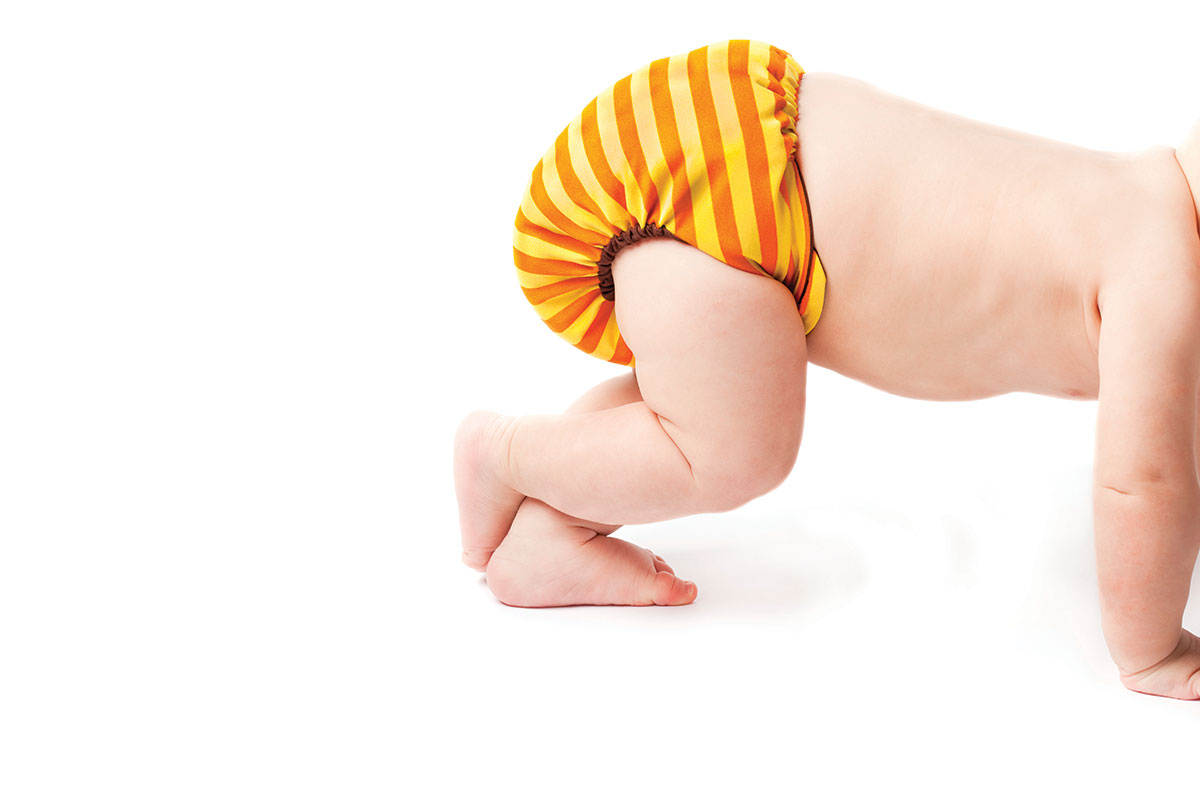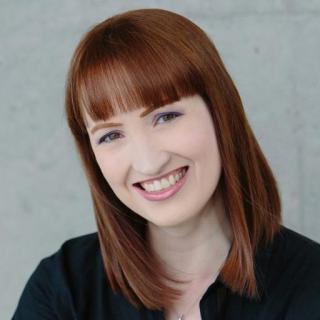
Little bundles of joy require immense bundles of diapers. Happily, there are options for every need and lifestyle: cloth, disposable, delivery services and elimination communication, which endeavors to forgo diapering altogether. The real challenge for parents is learning to navigate the possibilities and finding a solution that works for them.
“It can feel overwhelming, but it is manageable once you break it down,” says Joy MacTavish, owner of Sound Doula and an International Childbirth Education Association–certified childbirth educator. “It should feel refreshing to have choices, and it doesn’t have to be all or nothing. You can use a combination approach.”
Factors to consider when choosing a diapering system include baby’s health, your budget, convenience, caregivers and lifestyle preferences, such as environmental impacts. On a daily basis, newborns require 10–14 diapers, and toddlers, 6–8, according to Nancy Woodland, founding board member of the National Diaper Bank Network and executive director of Seattle’s WestSide Baby, which distributes diapers to families in need.
“Studies have shown that disposable and cloth diapers both have difficult impacts on the environment,” Woodland says. “Human waste is complicated. Cloth makes sense for a lot of people, but it’s not an option for everyone, such as low-income populations.”
If you can, it’s best to take time to weigh the choices early — even before baby arrives. But also remember that as baby changes, your diaper choices might evolve. MacTavish teaches a class on diapering options, “What Goes In, Must Come Out,” and advises firsthand research whenever possible.
“Being able to touch and feel options gives a better sense of differences. It’s one of the benefits of in-person education and support,” she says.
Cloth diapers
Modern cloth diapers are far from one size fits all. Selections include a variety of fabrics (including cotton, hemp and synthetics), styles, folds and costs. To ensure a sufficient stockpile of clean diapers, MacTavish recommends 36–48 diapers for newborns, which will last between three and four days.
“There is a continuum of cloth diapers. The easiest to use are often the most expensive. The ones that require an extra step or two will be more affordable,” MacTavish says.
Examples of more convenient cloth options are all-in-one (AIO) diapers. No folding is required — an AIO consists of one piece with a built-in fastener. In comparison, a pocket diaper requires the extra step of hand-stuffing the absorbent insert. The most economical choice is the two-step system, in which the caregiver lays a simple prefold diaper into a waterproof diaper cover that can be reused for several changes.
“Keep in mind that what’s convenient during the newborn stage might be less important as they age,” MacTavish advises.
An AIO might be worth the extra cost when time is in particularly short supply. A more affordable, two-step system might be more workable as life settles into a manageable routine.
“Diaper rental systems are particularly great for newborns,” MacTavish says. “They offer an assortment of styles shipped to the family. You usually use them for two weeks to 30 days, so you can try before you buy. It’s reassuring to do before you make an investment.”
The initial financial outlay for cloth diapers can be several hundred dollars, but MacTavish points out that it often saves money in the long run.
“Research shows that babies using cloth diapers are generally potty-trained sooner. It’s 18–24 months, compared to disposables, which can be three–four years,” she says.
Two years of disposable diapers can cost several thousand dollars.
Cloth delivery services
Count on constant washing with cloth diapers. If the thought makes your head spin, consider delivery. Seattle’s Baby Diaper Service has served the area since 1946. Diaper Stork launched in September 2014 to serve the growing demand in Seattle and on the Eastside.
“Of course, there is a financial component, and a diaper service may seem like a luxury,” says Jen Harwood, founder of Diaper Stork. “However, it’s very affordable when you compare it to the cost of using disposables, depending on the brand.”
Diaper services generally deliver clean diapers and pick up soiled ones on a weekly schedule. A cotton prefold style is the typical offering. Inquire about laundering techniques. Services should be attentive to using biodegradable, sustainable detergents; the use of harsh chemicals can irritate baby and harms the environment.
“You’re already doing laundry constantly, whether it’s crib sheets, onesies or bibs. You have to change diapers no matter what, but a service has the huge advantage of giving you back at least some of that time,” Harwood says.
Disposable
Many families use a combination approach: cloth diapers at home and disposables on the go. For other families, disposables are a necessity. Many early childhood education programs, low-income child care services, crisis shelters and other similar entities require disposable diapers. Cloth is also problematic for those who cannot afford at-home washers and dryers. In 2014, WestSide Baby provided more than 1 million diapers to impoverished King County families, but the program estimates the need is closer to 22 million diapers.
For all needs, a diversity of disposables exists beyond what’s available at big-box stores. For eco-friendly, baby-healthy diapers, look for brands that do not use chlorine, latex, dyes or perfumes, which can cause skin irritations and allergies. Also, research whether a brand was made from renewable resources, the percentage of natural versus synthetic materials used, and specifics regarding biodegradability.
“There is also now what we call a hybrid diaper. It has a reusable shell, which uses an insert that can either be cloth or disposable,” MacTavish says.
A common rule of thumb for deciphering diaper labels is to assume that an ingredient is being used unless the brand explicitly states that it is not.
In the Seattle area, Honest Company diapers are a commonly available option at baby boutiques such as Village Maternity at University Village and South Lake Union’s Tottini. These diapers are free of dyes, lotions and heavy metals; plus, the inner and outer sheets are biodegradable. The widest variety of disposables is readily found online.
In the City of Seattle, disposable diapers qualify as garbage. They should be cleaned of excrement and placed in the trash bin.
Elimination communication
Some families are forgoing diapers altogether.
“Just as a baby shows cues for being hungry or tired, you can learn when a baby needs to pee or poop,” MacTavish explains. “When the time comes, you hold the baby over a bowl or toilet. This eliminates or reduces the need for diapers.”
MacTavish says this often requires less observation than parents expect. Babies tend to relieve themselves at reliable times of day, such as first awakening. Some parents exclusively use elimination communication, while others incorporate periods of diaper-free time into a routine.
“It seems kind of out there for a lot of us new parents, but it’s used all over the world. It can become an oddly fun and rewarding thing. Plus, it’s one less diaper to change!” MacTavish says.












